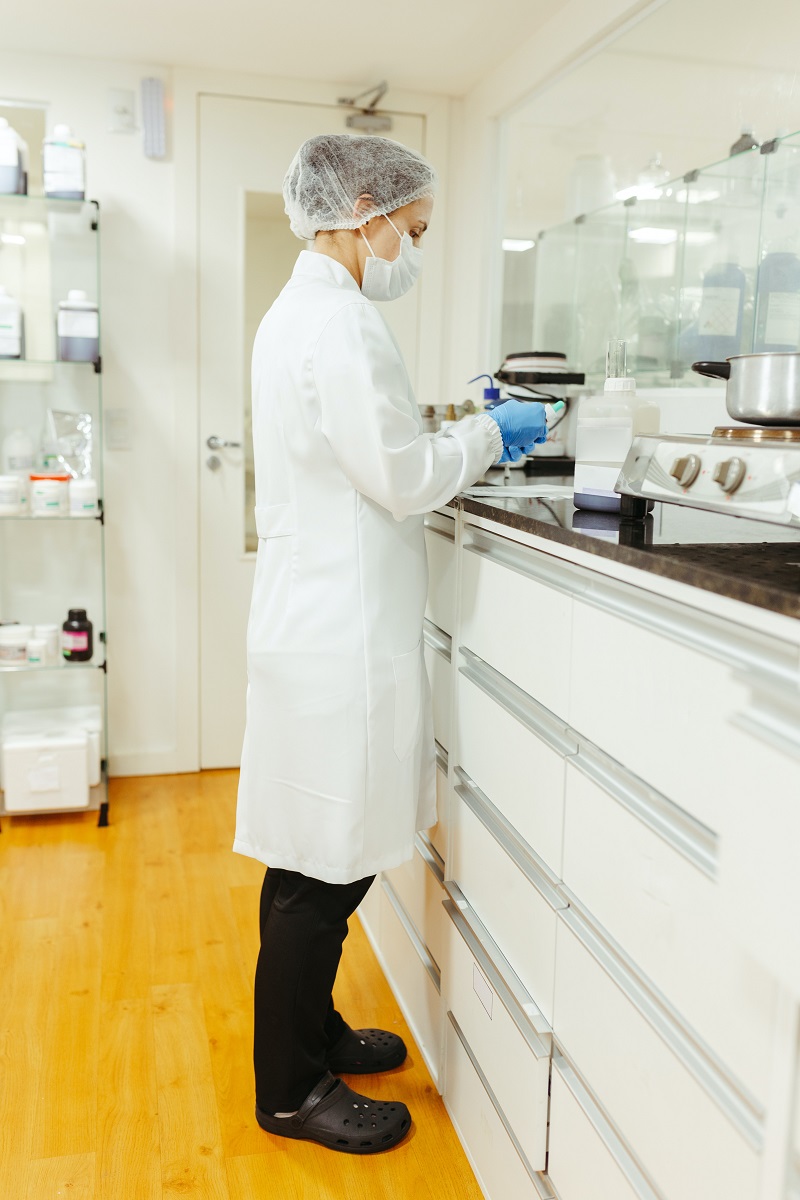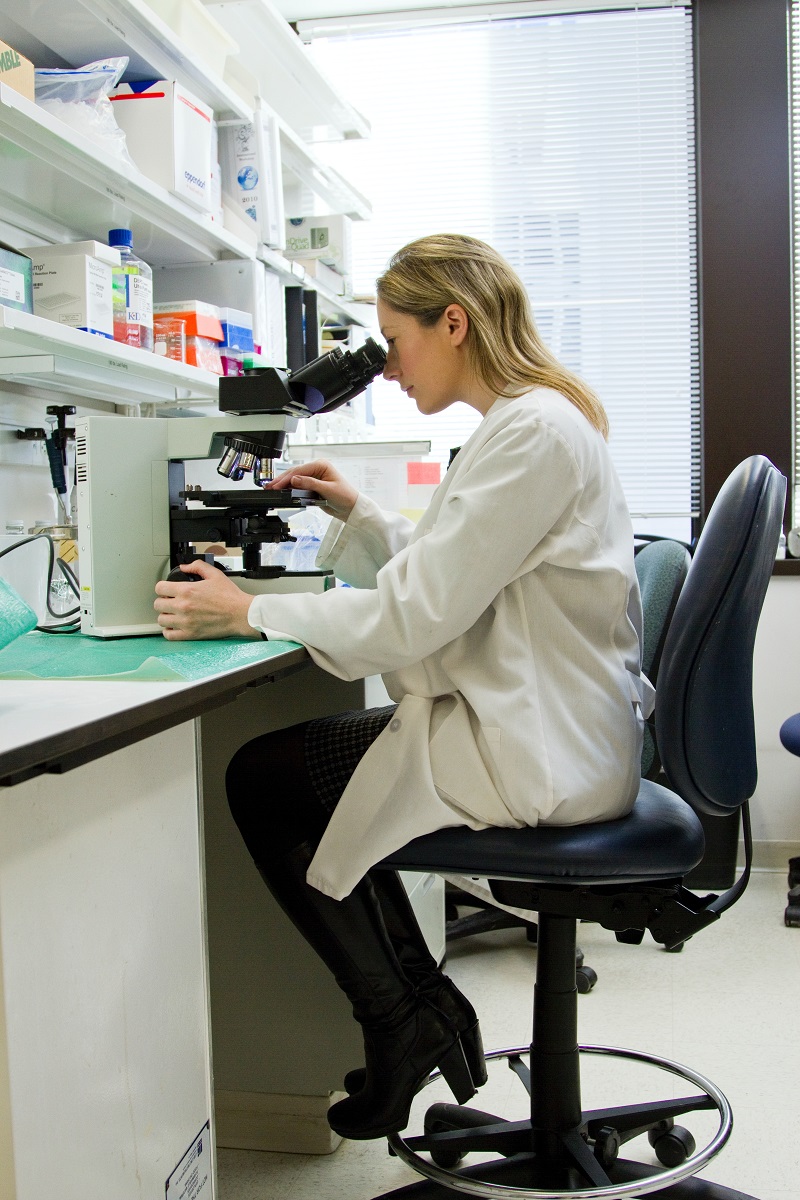When it comes to protective layers with jobs such as doctors, nurses, lab technicians and vets, lab coats are the essential layer. People like microbiologists, medical practitioners and chemists are in constant contact with contaminated liquids and things that can carry a lot of dangerous diseases. The lab coat provides protection and prevents contamination. We can also define it as a removable layer of skin between you and any potentially hazardous substances. Plus, it makes you look a lot more professional.
How to Choose the Right Size

Everybody is built differently. Everybody has a different size and shape, so whatever you purchase, including a lab coat, should fit you well and be the proper size. The differences in size between men and women can be very significant. One coat won’t fit all because men have wider shoulders and women have wider chests and a smaller waist.
Shoulder Width
No matter who’s wearing it, the coat should be well-fitted on the shoulders. Whenever you’re looking for protective and functional lab coats online or at the local store, make sure you get the proper fit. Be mindful of the size chart because not every manufacturing company has the same sizes. The coat should imitate your movements and not restrict you in any way.
You should be able to lift your arms up and down, turn, move, and if you have a tight coat, this would be impossible and very uncomfortable. To get the right level of comfort, the seams on the coat should be at least a few centimetres broader than your shoulders.
Sleeves
If you’re trying on the coat, make sure the sleeves are long enough. There shouldn’t be any exposed skin, in the area between the end of the sleeve and the gloves. But don’t let the sleeves be too long. This can be an issue during your working hours. They’ll interfere with the work and get in the way of procedures and taking care of patients.
If you’re buying the coat online, the safest way to do it is to measure the length. Let someone else do it with a soft measuring tape. Lay your hands freely next to your body while standing and measure from the middle of the neck to the end of your arm. This will give you the most precise sleeve length.
Overall Length
Your lab coat shouldn’t be too short or too long when you take the whole length into consideration. Its length can vary depending on a couple of factors. The first one is your personal preference and the second one is the dress code of your workplace. Generally speaking, its length should end just past your hip and fall somewhere in the middle of your thigh.
Because we’re all of different heights, always try on different lengths. See which one works best for you. Something too long can get in the way and prevent you from doing your job uninterrupted. And something too short can be inappropriate at times. In case you can’t find the right length at the store, look for a manufacturer that offers custom-made coats.
Circumference
The diameter of your lab coat should be large enough to allow you to fasten it completely with buttons, zips, Velcro, or snaps. When you’re buying lab coats online this can be hard to get right, so again, make sure you measure at home. If you’re always cold and intend to layer jumpers or hoodies underneath the coat, go one size up. This way you’ll always be comfortable. Men and women are built differently. Men have wider shoulders and women have wider chests, so their coats are built differently, and the circumference will differ.
Lab Coat Materials

In order to strike the perfect balance between the cost of the coat and the level of protection it offers, manufacturers often mix two or more materials. Every material is different, and it won’t suit every worker’s needs. Consider the level of safety and protection you need before buying the coat you like.
Cotton
It’s common knowledge that cotton is one of the cosiest and most breathable textiles. These kinds of coats are typically used in hospitals and labs that work with biological materials. Be mindful that cotton is not flame resistant, so if you’re working with flames often, avoid buying a cotton coat. There are certain blends that will make it fire-resistant. On the other hand, it can stand up to liquid splashes and chemicals.
Nylon
This is one of the most resilient and strong materials there are. Nylon is also very lightweight, which makes it perfect for hospital surroundings. It’s weather resistant and can stand up to the elements. It’s also easy to clean and maintain.
Polyester
Polyester has some liquid resistance, which is one advantage it provides over cotton. This makes the coat simpler to wash and dry compared to other materials. It’s also less expensive than cotton. However, there’s a downside to these lab coats. Be cautious and never get them close to an open flame because there can be significant damage to both you and the coat.
Polypropylene
This is material manufacturers use to make disposable or temporary coats. It has some good properties such as breathability, it’s lightweight and has good moisture-wicking properties. But because of its flammability, you shouldn’t use it in places that have hazardous materials. It works best for animal shelters, clean rooms and handling facilities.
Why Have More Than One Coat?

Spills
The lab coat has a practical as well as a symbolic purpose. If something happens to it, you’ll have difficulties working during the day especially if you work in a laboratory or a clinic. You’ll get annoyed and feel helpless. Because of this, having another coat on hand is very important. You can replace it immediately and continue your work. Spills happen all the time and we have to be prepared for anything the workday has for us.
Infections
It’s widely known that lab coats are one of the most infested and contaminated pieces of clothing. Naturally, washing your coat regularly will get rid of these infections, but will and can you wash the same coat every day? So, to be more practical, it’s a good idea to have 3-4 coats you can change every day. Now you’ll have time to wash each coat and have a new one ready at hand every time you need to go to work.
Wear and Tear
Your lab coat will soon start to look scuffed and worn. You can put off this for a while by buying many coats and swapping them out every day. Even those crafted of the best fabrics won’t last very long if you wear them every day. Once you find the right size and fit, but several of them and you’ll be good for a while.

Leave a comment